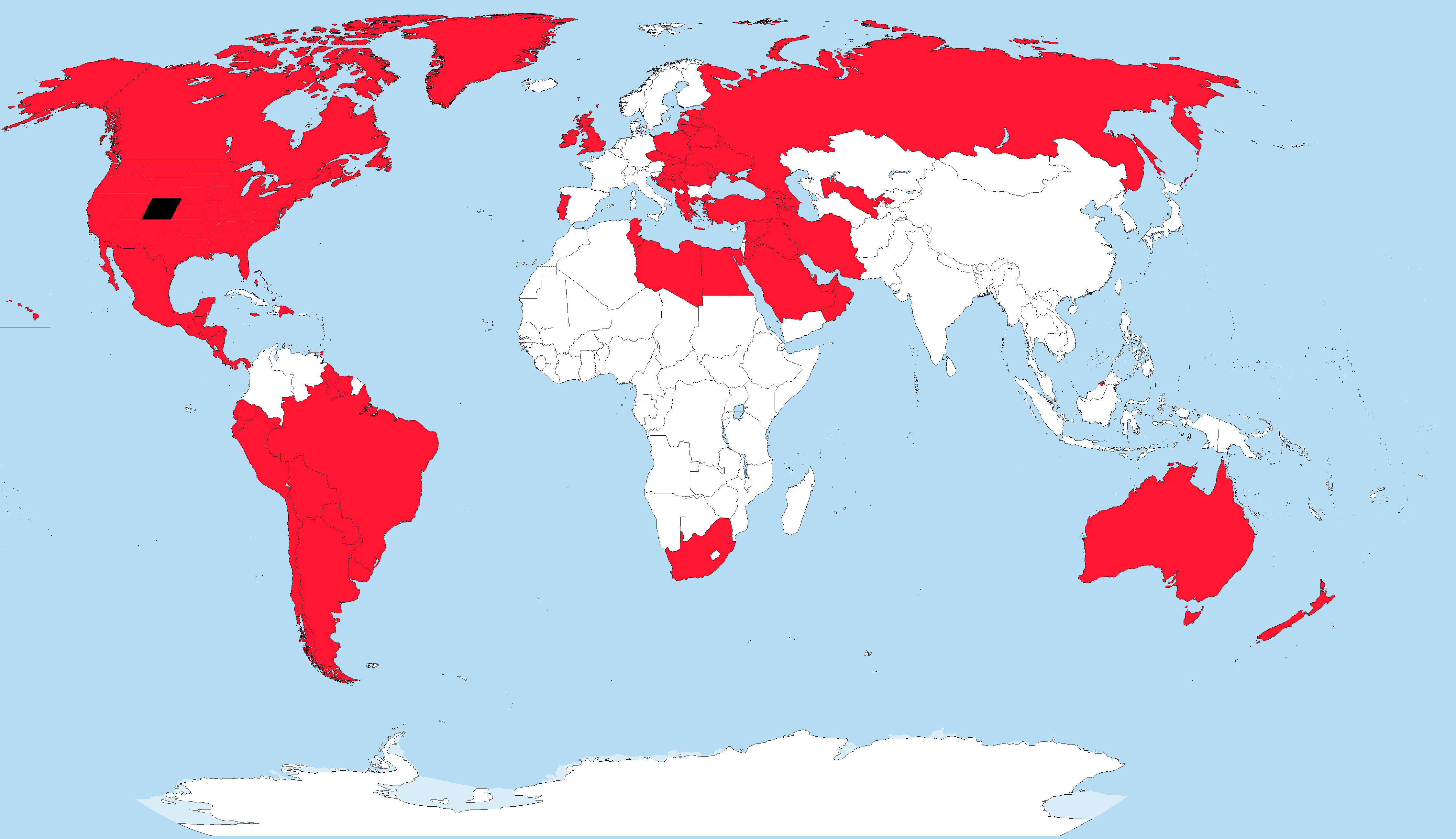

Alex Cartwright
Senior Cartographer & GIS Specialist
Alex Cartwright is a renowned cartographer and geographic information systems specialist with over 15 years of experience in spatial analysis and data...
Geographic Analysis
What This Map Shows
The visualization illustrates the obesity rates across various countries and states, highlighting those with a higher prevalence than Colorado, which boasts the lowest obesity rate in the United States at 25.1%. Countries and states marked in red indicate obesity rates exceeding Colorado's benchmark, while those in white show lower rates. This comparison provides a clear snapshot of global and national obesity trends, allowing us to understand how different regions measure up against the healthiest state in terms of weight management.
Deep Dive into Obesity Rates
Obesity is a complex health issue that arises from a combination of genetic, behavioral, and environmental factors. The World Health Organization (WHO) defines obesity as having a body mass index (BMI) of 30 or higher. In the U.S., obesity is a growing concern, with rates escalating dramatically over the past few decades. In fact, from 1990 to 2020, the prevalence of obesity among adults in the U.S. rose from 15% to over 42%.
Interestingly, Colorado's relatively low obesity rate can be attributed to a combination of lifestyle factors, including a strong culture of outdoor activities, access to healthy foods, and a generally health-conscious population. This stands in stark contrast to states and countries with higher obesity rates, where sedentary lifestyles and poor dietary habits dominate.
For instance, states like Mississippi and West Virginia report obesity rates exceeding 38%, driven by high consumption of processed foods and lower levels of physical activity. On a global scale, countries like Mexico and several Pacific Island nations grapple with obesity rates that can soar above 30%, influenced by rapid urbanization, increased availability of fast food, and socioeconomic factors that limit access to healthier options.
Have you noticed that urban environments often correlate with higher obesity rates? This can be linked to the prevalence of food deserts—areas with limited access to affordable and nutritious food. In contrast, states like Colorado, with a focus on community-driven health initiatives, tend to promote healthier lifestyles more effectively.
Regional Analysis
When analyzing the regions shown on the map, it's essential to consider the diverse factors contributing to obesity rates. In the United States, the South and Midwest regions typically report higher obesity rates compared to the West, where states like Colorado and California actively promote health and wellness. For example, Alabama has an obesity rate of around 36.1%, influenced by cultural dietary preferences and socioeconomic challenges that affect health behaviors.
In comparison, states with lower obesity rates, such as Utah and Hawaii, benefit from a combination of outdoor recreational opportunities and a more active lifestyle. Interestingly, Utah often ranks high in physical activity and healthy eating, showing how environmental factors can shape public health outcomes.
Globally, the variations can be stark. For instance, in Europe, countries like France and Switzerland report lower obesity rates than the U.S. Average, often attributed to lifestyle choices that emphasize balanced diets and regular physical activity. On the other hand, nations in the Middle East, such as Kuwait, combat rising obesity rates due to rapid modern lifestyle changes that favor convenience over health.
Significance and Impact
Understanding obesity rates is crucial for public health planning and intervention strategies. High obesity rates are linked to various health complications, including diabetes, heart disease, and certain cancers, burdening healthcare systems and impacting quality of life. The economic implications are significant as well; obesity-related health issues can drive up healthcare costs and reduce workplace productivity.
As we look into the future, trends suggest that obesity rates may continue to rise, particularly in developing countries undergoing rapid urbanization. However, there is hope as awareness of healthy lifestyles increases and more communities prioritize nutrition education and physical activity initiatives.
Have you ever wondered how individual choices can impact broader public health trends? By promoting awareness and accessible health resources, communities can work towards reducing obesity rates and improving overall health outcomes. The map serves as a reminder of the ongoing global challenge of obesity and the importance of collective action in fostering healthier environments for all.
Comments
Loading comments...